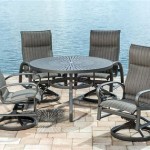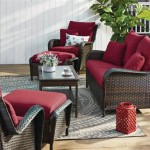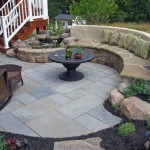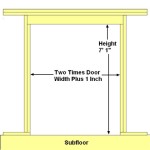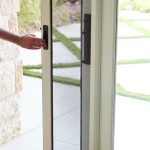Patio Bench Cushions: Enhancing Outdoor Comfort and Style
Patio bench cushions serve as a vital component in transforming outdoor seating areas into comfortable and inviting spaces. More than mere padding, these cushions contribute significantly to the overall aesthetics and functionality of a patio or garden. Selecting the right patio bench cushions involves considering several factors, including material, size, weather resistance, and design, to ensure optimal comfort, durability, and visual appeal.
The primary purpose of a patio bench cushion is to provide comfort. Hard or uncomfortable seating can deter individuals from spending time outdoors. High-quality cushions alleviate this issue by providing a soft and supportive surface to sit on, making the outdoor space more appealing for relaxation and socializing. The level of comfort provided depends largely on the filling material used in the cushion.
Beyond comfort, patio bench cushions also significantly impact the appearance of an outdoor space. They provide an opportunity to introduce color, pattern, and texture, thereby enhancing the overall design. By selecting cushions that complement the existing patio furniture and surrounding landscape, homeowners can create a cohesive and visually appealing outdoor environment.
Furthermore, the right patio bench cushions can extend the life of outdoor benches. By providing a barrier between the bench and the elements, cushions help to protect the bench surface from scratches, stains, and fading caused by sun exposure and moisture. This protection can preserve the integrity of the bench, particularly for benches made of wood or metal.
Understanding Material Options
The choice of material is paramount when selecting patio bench cushions, as it directly affects the cushion's durability, weather resistance, and overall comfort. Common materials include polyester, acrylic, olefin, and various blends, each offering distinct advantages and disadvantages.
Polyester is a widely used synthetic fabric known for its affordability and versatility. Polyester cushions are generally resistant to fading and mildew, making them suitable for outdoor use. However, polyester is not as durable as some other materials and may be more prone to wear and tear over time, especially under heavy use. It also lacks the same level of water resistance as specialized outdoor fabrics.
Acrylic fabrics, such as Sunbrella, are a premium option for patio bench cushions. Acrylic is highly resistant to fading, staining, and mildew, making it an excellent choice for outdoor environments. These fabrics are also known for their exceptional durability and ability to withstand harsh weather conditions. While acrylic cushions are more expensive than polyester, their superior performance and longevity often justify the investment.
Olefin, another synthetic fabric, is a popular choice for outdoor cushions due to its resistance to fading, staining, and mildew. Olefin is also relatively affordable, making it a good option for budget-conscious consumers. It is a lightweight and comfortable material, although it may not be as durable as acrylic fabrics. Olefin is often used in outdoor rugs and other patio accessories as well.
Fillings for patio bench cushions can include polyester fiberfill, foam, and blends of both. Polyester fiberfill provides a soft and plush feel, but it may flatten over time with frequent use. Foam offers more support and structure, but it can retain moisture if not properly treated. High-density foam is generally preferred for its durability and ability to maintain its shape. The choice of filling often depends on the desired level of comfort and the intended use of the bench.
Key Considerations for Size and Fit
Proper sizing and fit are essential for ensuring that patio bench cushions provide optimal comfort and aesthetic appeal. Cushions that are too large or too small can look awkward and may not provide adequate support. Accurately measuring the bench is the first step in determining the appropriate cushion size.
Measure the length, width, and thickness of the bench seating area. When measuring the length, consider whether the cushion should extend to the edges of the bench or if a slight overhang is desired. For the width, ensure that the cushion fits snugly within the bench frame without being too tight or too loose. The thickness, or height, of the cushion will determine the level of padding and support provided.
Standard patio bench cushion sizes are available, but custom sizes may be necessary for benches with unusual dimensions. Many retailers offer custom cushion options, allowing homeowners to specify the exact measurements needed for a perfect fit. While custom cushions may be more expensive, they ensure a tailored look and optimal comfort.
In addition to the overall dimensions, consider the shape of the bench when selecting cushions. Benches with curved or angled designs may require cushions with corresponding shapes. Some retailers offer cushions specifically designed for curved benches, while others may require custom-made cushions to accommodate unique shapes.
When purchasing cushions, it is also important to consider the number of cushions needed for the bench. A single, long cushion may be suitable for some benches, while others may require multiple smaller cushions. The choice depends on the length of the bench, the desired aesthetic, and the level of support needed.
Maintaining and Protecting Patio Bench Cushions
Proper maintenance and protection are essential for extending the life of patio bench cushions and preserving their appearance. Regular cleaning, proper storage, and the use of protective covers can help to prevent damage from the elements and ensure that cushions remain comfortable and attractive for years to come.
Regular cleaning is crucial for removing dirt, stains, and mildew from patio bench cushions. The frequency of cleaning depends on the level of exposure to the elements and the amount of use the cushions receive. As a general rule, cushions should be cleaned at least once a month during the peak outdoor season and more frequently if they are exposed to heavy rain or spills.
Most outdoor cushions can be cleaned with mild soap and water. Use a soft brush or sponge to gently scrub the cushion surface, paying particular attention to stained or soiled areas. Rinse the cushion thoroughly with clean water and allow it to air dry completely before storing or using it again. Avoid using harsh chemicals or abrasive cleaners, as these can damage the fabric and cause fading.
For more stubborn stains, consider using a specialized outdoor fabric cleaner. These cleaners are designed to remove stains without damaging the fabric. Always test the cleaner on a small, inconspicuous area of the cushion before applying it to the entire surface. Follow the manufacturer's instructions carefully to ensure proper use and avoid damaging the cushion.
Proper storage is essential for protecting patio bench cushions when they are not in use. During the off-season or periods of inclement weather, store cushions in a dry, sheltered location, such as a garage, shed, or covered patio. This will help to prevent moisture damage, mildew growth, and fading caused by sun exposure.
If storing cushions outdoors, use waterproof covers to protect them from the elements. These covers should be made of a breathable material to allow air circulation and prevent moisture buildup. Ensure that the covers fit snugly around the cushions to prevent water from seeping in. Regularly check the covers for any signs of damage or wear and replace them as needed.
For cushions filled with foam, consider using a dehumidifier in the storage area to help prevent moisture buildup. Foam can retain moisture, which can lead to mildew growth and a musty odor. A dehumidifier will help to keep the storage area dry and prevent these issues.
In addition to cleaning and storage, consider using stain-resistant treatments on patio bench cushions. These treatments can help to repel water and prevent stains from setting in. Apply the treatment according to the manufacturer's instructions and reapply as needed to maintain its effectiveness.
By implementing these maintenance and protection strategies, homeowners can significantly extend the life of their patio bench cushions and ensure that they remain comfortable and attractive for many years to come. Consistent care and attention will help to preserve the investment and enhance the enjoyment of outdoor living spaces.

Protecting Your Outdoor Bench Cushions With Cushion Covers

Kensington Garden 18 X51 Damask Outdoor Bench Cushion Asbury Park Target

Outdoor Bench Cushions Ltd Commodities

Custom Outdoor Bench Cushions

Sunbrella Indoor Outdoor Corded Bench Cushion Target

Arden Selections 46 In X 17 Ruby Red Leala Outdoor Bench Cushion Tg06641b D9z1 The Home Depot

Sorra Home Gardenia Seaglass Indoor Outdoor Bench Cushion Com

Protecting Your Outdoor Bench Cushions With Cushion Covers

Greendale Home Fashions Solid Sunbeam Rectangle Outdoor Bench Cushion Oc5812 The Depot

Custom Made Bench Cushions Patio Yacht Outdoor Fabric
Related Posts

